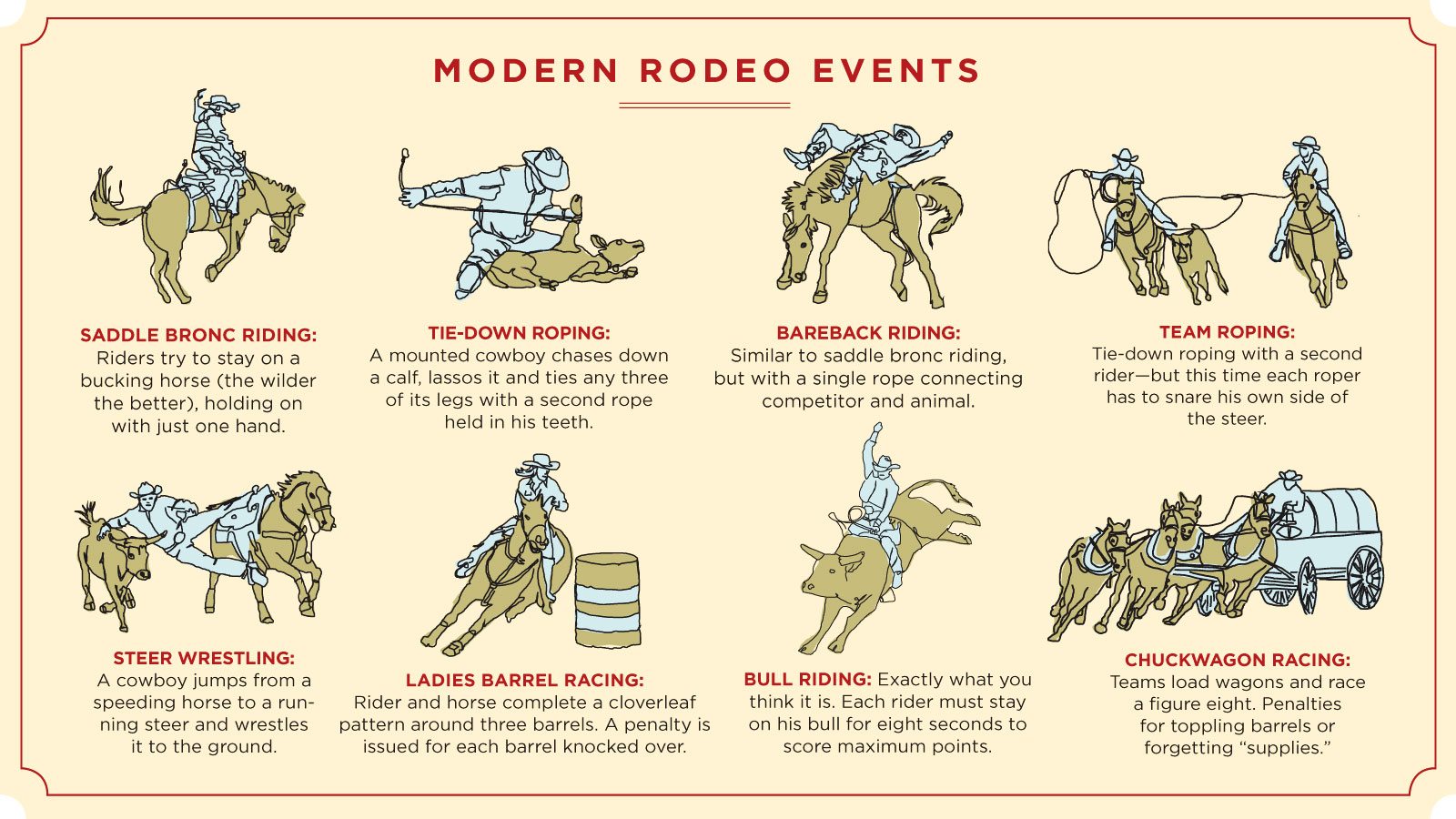The dirt flies, livestock smells linger in the air. But it’s not just the horses, bulls and calves that get cowboys and girls out every weekend. It’s Alberta rodeo—the adrenaline rush and glory of the province’s homegrown passion.
“It’s human against animal, David trying to conquer Goliath,” says Kathy Lucas, the director of marketing for the Canadian Professional Rodeo Association. “It’s everything people do on a ranch, but sped up and turned into a competition.”
That competition, however, doesn’t garner much mainstream attention, so for those unfamiliar with farm life, watching a rodeo can seem a bit strange. But look closer and you’ll see an incredibly exciting sport that’s flourishing throughout Alberta’s smaller communities.
Modern rodeo grew out of 19th-century rancher networking in the American Southwest and Mexico. Cattle owners would meet for business—and to test their skills against one another. The first major Canadian rodeo opened in 1902 in Raymond, Alberta. By 1912, the Calgary Stampede had launched and rodeo was well on its way in Alberta.
Though similar events emerged, it wasn’t until 1945 that they officially became known as “rodeo”—until then they’d been called frontier days or cowboy contests. Since then, some rodeos have expanded while others faded away. For top competitors today, the sport has become quite lucrative: Prize pools have grown from $300,000 spread over 50 rodeos in 1970 to more than $5 million in 2014.
Rodeo events are grounded in the work required of ranch hands. The experience of Dale Skocdopole, a six-time Canadian Finals Rodeo competitor, is typical: He specializes in team and tie-down roping—skills he uses every day on his ranch outside of Red Deer. “Competing takes it to a whole other level. There’s a lot of action—and a lot of risk,” Skocdopole says.

The rodeo circuit’s biggest events are the Calgary Stampede and Canadian Finals Rodeo in Edmonton. But dozens of smaller towns, from Airdrie to Okotoks, also host excellent contests.
Notable early-season contests include the Broncs and Honky Tonks Indoor Rodeo in Medicine Hat, Thorsby Haymaker Rodeo and Leduc’s Black Gold Pro Rodeo. The Grande Prairie Stompede is also worth a peek; it’s well known for its chuckwagon races.
The Ponoka Stampede—celebrating its 80th edition in 2016—is also a big draw. “What you’re going to see is the traditional heritage of Alberta,” says Blair Vold, vice president of the Ponoka Stampede.
“It’s the biggest event in town, but you still get the small-town atmosphere and country flavour.” Visitors can fish for trout, tour the local pioneer museum and snap photos of the world’s largest saddle bronc statue, then cheer on competitors in what has become one of the world’s most lucrative rodeos (last year’s event had a $600,000 purse).
And if you’re looking to combine rodeo with a mountain getaway, the 90-year-old Jasper Heritage Rodeo lures bronc riders and steer ropers to the heart of the Rocky Mountains. This year’s event takes place August 17 to 20 at Jasper National Park. Pre-purchase your annual Parks Canada Discovery Family Pass at any AMA centre and save $10. When in Jasper, you can also save by booking a stay with AMA—you’ll always get the best rates with our Best Price Guarantee. See AMATravel.ca/MountainGetaways.
While rodeo audiences and prize money have grown, each event remains at heart a celebration of Western history and values. They’re a chance to honour agricultural prowess, while celebrating hometown pride and culture.
